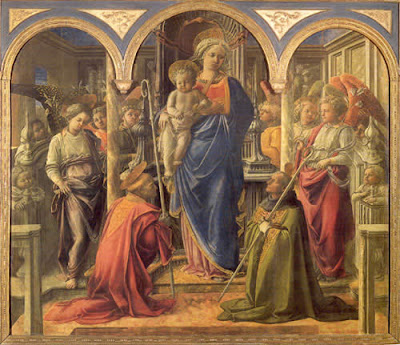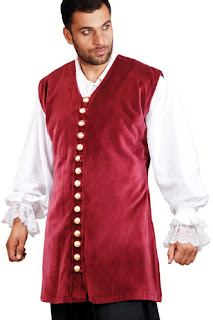English history is full of mysteries, and there are a number of facts, which are still the subject of research. Anne Boleyn, the queen consort of King Henry VIII of England, is one of the famous names that we can take as an example in this regard. She was the second wife of the king and was recognized as a key figure of English Reformation after her marriage and subsequent execution. The era of English Reformation was the time, when England progressed in various fields, such as art, culture, medieval costumes and more.
But, the word ‘reformation’ refers to the religious reformation against the dogmatism of Roman Catholic Church during that period. First, the king broke with Church of Rome in order to marry her and declared himself the head of Church of England. In this way, Anne indirectly contributed in reformation. Moreover, she was an open minded lady, which can be estimated with the fact that she argued to distribute the revenues to the charitable and educational institutions instead of giving them to church. She made this argument to Thomas Cromwell, 1st Earl of Essex. It is claimed that Thomas conspired against Anne because of his dispute with her.
Anne Boleyn born in the year 1501, and was the daughter of Thomas Boleyn, 1st Earl of Wiltshire, and his wife Lady Elizabeth Howard. She got the education in Netherlands and France, and returned to England in the year 1522 for marrying her Irish cousin, James Butler, 9th Earl of Ormond. But, the plans of her marriage with James failed, and she found the place as maid of Honor to Henry VIII’s first queen consort, Catherine of Aragon. In the year 1523, there was a secret betrothal between her and Henry Percy, son of the fifth Earl of Northumberland. But, the betrothal was broken in 1524, and she was sent back home to Hever Castle. King Henry tried to seduce her, which was one of the absorbing factors for his desire to marry her.
King annulled his marriage his first queen for marrying Anne. Roman Catholic Church declared it as illegal, but the king broke his relations with the church and declared himself the head of Church of England. There is no doubt that it seems that the relation was broken because of the selfish motive of the king. Still, it put some great impacts on the nation. He married Anne on 25th January 1933. She gave birth to Elizabeth on 7th September and could not give birth to son.
The relation of the two could not be continued for the long. She was found guilty for high treason in April 1536. Moreover, she was also accused of adultery and incest. There were no sufficient evidence found against her, but still she was beheaded on 19th May, 1536.
Despite the small time span of her existence as a queen, she became widely popular in England. Her renaissance clothing styles are copied by women in today’s scenario also. Moreover, some films have also been made on her biography. Interestingly, some researchers of occultism claim the existence of the ghost of Anne today also.






 Renaissance was the age when set ideals of society in Europe were broken and new ways of thinking emerged and supported. This period has given rise to inspiration for the modern world, for people who want to make a change in the traditional ideas and lifestyles. This is also reflected in the degree of freedom the Renaissance society had in its dress, the range of colours, outfits and patterns of clothing.
Renaissance was the age when set ideals of society in Europe were broken and new ways of thinking emerged and supported. This period has given rise to inspiration for the modern world, for people who want to make a change in the traditional ideas and lifestyles. This is also reflected in the degree of freedom the Renaissance society had in its dress, the range of colours, outfits and patterns of clothing. 
 1490s is the time when costumes began to acquire a Renaissance look of extravagance in Europe. Even within this framework, different parts of Europe followed different styles. England followed a more mediaeval look in Renaissance dresses than other parts of Europe. Flowing lines, puffed long sleeves, head-dresses, velvet and silk lined with brocade and laces became the norm in aristocratic
1490s is the time when costumes began to acquire a Renaissance look of extravagance in Europe. Even within this framework, different parts of Europe followed different styles. England followed a more mediaeval look in Renaissance dresses than other parts of Europe. Flowing lines, puffed long sleeves, head-dresses, velvet and silk lined with brocade and laces became the norm in aristocratic 
 Renaissance costume had some really interesting designs for both men and women; the designs were more of lavish as well as sophisticated. Furs and silks were mainly used as it depicted luxury and status. It was kind of showing of one’s social status through means of clothing. It is generally believed that fashion came into existence with the era and nothing like style or trend was seen before this. Initially these renaissance clothes restricted the movement but later it changed eventually. Layers were generally preferred and women costumes included skirt, vest, bodice, collar and an underskirt. Men’s wear consisted of coats and clothes that gave a square look to man’s body. Lots of padding was done to make the shoulder broader. They also wore long tunics which went down to the knees. Men’s fashion focused on material that had a bold look, long sleeves were preferred, tight body garments, brimmed caps and leather jackets.
Renaissance costume had some really interesting designs for both men and women; the designs were more of lavish as well as sophisticated. Furs and silks were mainly used as it depicted luxury and status. It was kind of showing of one’s social status through means of clothing. It is generally believed that fashion came into existence with the era and nothing like style or trend was seen before this. Initially these renaissance clothes restricted the movement but later it changed eventually. Layers were generally preferred and women costumes included skirt, vest, bodice, collar and an underskirt. Men’s wear consisted of coats and clothes that gave a square look to man’s body. Lots of padding was done to make the shoulder broader. They also wore long tunics which went down to the knees. Men’s fashion focused on material that had a bold look, long sleeves were preferred, tight body garments, brimmed caps and leather jackets.